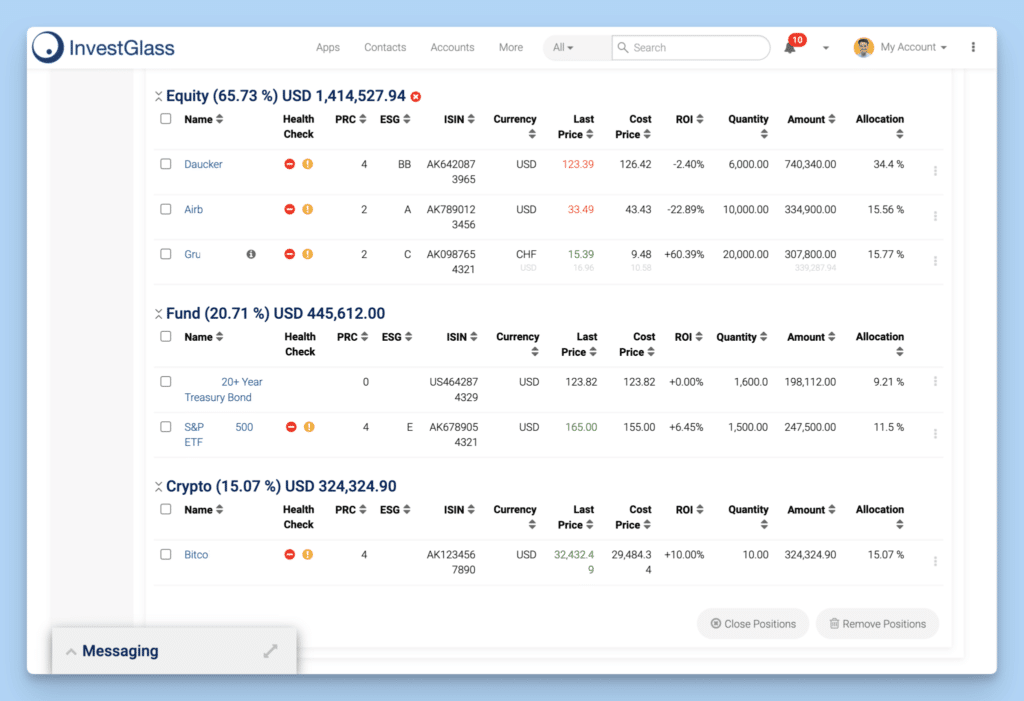How to Use AI to Reach Goal Automation: Best Practices and Real-World Examples

If you’re looking to use AI to reach goal automation, you’re in the right place. This article delves into how AI can help automate your goals, highlighting best practices, key benefits, and real-world examples. Learn how AI tools can optimize workflows, save time, and drive business efficiency.
Key Takeaways
AI enhances goal automation by optimizing tasks, tracking goals, and improving decision-making across various industries.
Implementing AI tools requires clear objectives, careful planning, and pilot testing to refine processes and ensure alignment with business goals.
Monitoring success metrics, investing in training, and addressing potential challenges are critical for maximizing the benefits of AI in goal automation.
Understanding Goal Automation with AI
Utilizing artificial intelligence, goal automation employs agent programs focused on goals to formulate extensive strategies that pursue distinct targets. These agents of AI are adept at refining tasks, monitoring objectives, elevating accuracy levels, and fostering autonomous functionalities – all contributing to heightened efficiency in the corporate landscape. They stand as pioneers within AI advancements by addressing multifaceted problems and fine-tuning an array of functions throughout diverse sectors.
Under the umbrella of cognitive automation lies artificial intelligence, which leverages sophisticated processing capabilities for supporting decision-making processes and achieving set goals. The incorporation of AI technology into business procedures is instrumental in conserving time, diminishing instances of human mistakes, and facilitating a more strategic distribution of resources. Natural language processing (NLP) enhances automation platforms for tasks like invoice processing and chatbot functionality, enabling machines to interpret and understand human language, facilitating tasks such as data extraction from documents and generating human-like text responses.
Given their versatility and performance effectiveness, these goal-oriented agents have gained considerable recognition across assorted fields for bolstering operational productivity as well as promoting enlightened choices in decision-making scenarios.
Key Benefits of AI for Goal Automation
AI is adept at swiftly handling data and overseeing repetitive tasks, leading to enhanced efficiency. This advancement cuts down on operational costs by freeing up staff time and permits uninterrupted operation without the need for overtime. The ability of AI to sift through extensive datasets and deliver actionable insights bolsters decision-making processes, allowing companies to make well-grounded decisions.
The influence of AI on goal automation is significant, resulting in heightened efficiency, cost reductions, and better-quality decision-making. By automating routine tasks with AI technology, businesses can redirect their focus towards strategic planning and innovation—key drivers that propel growth and achievement.
Setting Goals for AI Automation

Identifying Business Goals for AI Automation
To identify business goals for AI automation, consider the following steps:
Conduct a business process analysis: Begin by thoroughly examining your current business processes. Identify areas where AI automation can significantly improve efficiency, reduce operational costs, and enhance customer satisfaction. This analysis will help pinpoint the most impactful areas for AI integration.
Assess current workflows: Take a close look at your existing workflows to determine which tasks are repetitive, time-consuming, or prone to errors. These tasks are prime candidates for AI automation, as they can benefit the most from the precision and speed that AI tools offer.
Define key performance indicators (KPIs): Establish clear metrics to measure the success of your AI automation efforts. Common KPIs include cost savings, productivity gains, and improvements in customer satisfaction. These indicators will help you track progress and demonstrate the value of AI automation to stakeholders.
Prioritize goals: Determine which goals are most critical to your business and allocate resources accordingly. Prioritizing goals ensures that your AI automation efforts are focused on areas that will deliver the greatest impact and align with your overall business strategy.
Defining Key Performance Indicators (KPIs)
KPIs are essential for measuring the success of AI automation. Common KPIs for AI automation include:
Cost savings: Measure the reduction in operational costs resulting from AI automation. This KPI helps quantify the financial benefits of automating routine tasks and processes.
Productivity gains: Track the increase in productivity resulting from AI automation. By streamlining repetitive tasks through automation, employees can dedicate their time to more complex and strategic work, ultimately enhancing overall productivity.
Customer satisfaction: Measure the improvement in customer satisfaction resulting from AI automation. AI tools can enhance customer interactions by providing faster and more accurate responses to customer queries, leading to higher levels of satisfaction.
Error reduction: Track the reduction in errors resulting from AI automation. AI-powered tools can perform tasks with a high degree of accuracy, minimizing the risk of human errors and improving the quality of outputs.
Establishing a Roadmap for AI Automation
To establish a roadmap for AI automation, consider the following steps:
Develop a strategic plan: Outline the business goals, objectives, and timelines for AI automation. A well-defined strategic plan provides a clear direction for your AI initiatives and ensures alignment with your overall business strategy.
Assess current infrastructure: Evaluate your existing technology infrastructure to determine if it can support AI automation. This assessment will help identify any gaps or areas that need upgrading to accommodate AI tools and technologies.
Identify AI tools and technologies: Research and select AI tools and technologies that align with your business goals and objectives. Choose tools that are capable of addressing your specific needs and can be seamlessly integrated into your existing workflows.
Develop a phased implementation plan: Create a plan for implementing AI automation in phases, starting with small pilot projects. This approach allows you to test and refine your AI solutions on a smaller scale before rolling them out more broadly. It also helps manage risks and ensures a smoother transition to full-scale automation.
AI Tools for Goal Automation
AI-powered tools are pivotal in streamlining goal-setting and the pursuit of achievement, boosting efficiency and impact within business operations. Automation tools like Optimove employ AI to sift through customer data, delivering actionable marketing intelligence. By coupling ChatGPT with Zapier integration, automated email correspondences can be executed without necessitating programming skills.
It’s critical for businesses to select automation tools that align well with their particular ambitions and objectives. For example, Notion facilitates content strategy automation while offering tailored insights vital for monitoring progress.
Jasper serves as an AI-driven tool adept at crafting various content types including articles, advertisements, and social media updates on a large scale. By carefully choosing appropriate business process automation tools powered by AI capabilities, enterprises can refine processes and attain targets with greater ease.
How to Implement AI-Powered Goal Automation
Starting to automate goals with AI necessitates the creation of well-defined aims that demonstrate the project’s worth. Meticulous preparation is essential, and developing a schedule with distinct checkpoints aids in keeping on track throughout the deployment phase. By adopting modest incremental introductions of AI, organizations can evaluate and hone their procedures without overburdening their existing workflows.
It’s vital to pinpoint repetitive tasks that are candidates for augmentation by AI technology. Assessing particular necessities enables companies to select appropriate AI-powered tools tailored for automation that correspond with enduring strategies. The customization features offered by these tools permit businesses to modify solutions according to their distinctive demands, enhancing the effectiveness of adoption.
Conducting limited scope pilots before broader application ensures an optimized mix of procedural steps, technological instruments, and staff education is found through testing smaller implementations first. Tracking significant indicators such as efficiency gains and reduction in mistakes during these trials provides crucial insights into perfecting the approach towards employing AI technologies effectively. Triumphs achieved during pilot phases set a solid foundation for implementing full-scale automated systems within enterprises aiming at heightened productivity and operational fluidity.
AI in Business Process Automation for Repetitive Tasks
The implementation of AI technologies in business facilitates operations that require minimal human oversight. This area is experiencing rapid expansion, with projections indicating the market for business process automation will double from $9.8 billion to an impressive $19.6 billion by 2026—underscoring its burgeoning importance. Leveraging AI for automating business processes brings a wealth of advantages such as heightened precision, increased efficiency, and superior customer interactions.
AI tools are instrumental in reducing the workload on staff by handling routine undertakings like replying to consumer inquiries and organizing schedules, thereby allowing employees to focus on more complex tasks which can lead to greater levels of customer satisfaction. These tools have the capability to scrutinize client feedback and pinpoint fresh opportunities that facilitate innovation and make better use of resources within enterprises.
As advancements continue in artificial intelligence technology, its significance in simplifying business operations while boosting efficacy is poised for Growth and integration into various sectors.
Data Analysis and AI Automation
Data analysis is a critical component of AI automation. By analyzing data, businesses can identify areas where AI automation can improve efficiency, reduce costs, and enhance customer experiences.
The Role of Data Analysis in AI Automation
Data analysis plays a crucial role in AI automation by:
Identifying patterns and trends: Analyzing data to identify patterns and trends that can inform AI automation decisions. By understanding these patterns, businesses can make more informed choices about where to apply AI for maximum impact.
Predicting outcomes: Using data analysis to predict outcomes and make informed decisions about AI automation. Predictive analytics can help forecast future trends and behaviors, enabling businesses to proactively address potential challenges and opportunities.
Optimizing processes: Analyzing data to optimize business processes and improve efficiency. Data-driven insights can reveal inefficiencies and bottlenecks in workflows, allowing businesses to streamline operations and enhance productivity.
Measuring success: Using data analysis to measure the success of AI automation and make adjustments as needed. Continuous monitoring and analysis of key performance indicators (KPIs) ensure that AI initiatives are delivering the desired results and provide a basis for ongoing improvement.
By incorporating data analysis into AI automation, businesses can ensure that their AI automation efforts are data-driven and effective. This approach not only enhances the accuracy and efficiency of automated processes but also supports informed decision-making and continuous improvement.
Real-World Examples of AI-Powered Goal Automation
Various industries are experiencing a transformation due to AI-powered automation, which is evident in areas like sales and marketing, human resources, and finance. Its practical applications are numerous. They range from employing predictive maintenance that minimizes interruptions and prolongs the life of machinery to improving financial forecasting and risk evaluation through the use of AI-driven automation.
Subsequent sections will explore in greater detail the ways in which artificial intelligence is revolutionizing particular domains such as sales and marketing, human resources, and finance.
Sales and Marketing
In the realm of sales and marketing, artificial intelligence capitalizes on predictive analytics to project future sales performance by scrutinizing historical data and identifying patterns in market trends. This empowers companies to make well-informed choices and focus on promising leads, thereby amplifying the effectiveness of their sales approaches.
Analyzing past purchase histories and customer interactions through data analysis facilitates the crafting of tailored marketing campaigns that strike a chord with distinct audience segments. The synergy between predictive analytics, customer relationship management, and customer behavior analysis considerably bolsters the impact of marketing initiatives while propelling revenue expansion—providing businesses with a crucial advantage amidst competitive marketplaces.
Human Resources
By utilizing AI-driven platforms within human resources, companies can evaluate the abilities of their workforce and suggest tailored paths for career growth. This enhances professional advancement while refining HR processes. Leveraging AI in this way helps maintain a skilled and competitive workforce, leading to heightened productivity as well as increased employee satisfaction.
Finance

In the finance sector, AI automates invoice processing by:
Reading and interpreting invoice data
Matching it to purchase orders
Flagging discrepancies
Extracting data automatically
This reduces manual effort and enhances accuracy, streamlining financial operations.
Additionally, AI learns patterns of normal behavior, flags unusual transactions, and improves security, thus offering a robust approach to fraud detection.
AI also automates expense tracking by integrating with financial systems, making reporting more efficient and less error-prone. By identifying patterns in financial data, AI aids in fraud detection, spending optimization, and budget improvement, providing a comprehensive solution for financial management.
Best Practices for Leveraging AI in Goal Automation
Utilizing AI to automate objectives necessitates the precise evaluation of success metrics and diligent monitoring of goal-oriented progress. It’s beneficial to keep an eye on quantifiable indicators, like the amount of time saved or number of content items generated each week. After integrating AI into workflow automation, it’s critical to observe data and gather feedback from teams for a period ranging between three to six months in order to fine-tune procedures and confirm that they’re meeting anticipated results.
Incorporating AI tools incrementally during team gatherings through brief training sessions can aid staff members in adjusting smoothly to novel utilities and methods. Ideally, these AI instruments should be accompanied by extensive instructional resources such as full product guides, walkthroughs, and demonstration videos that provide essential support for workforce education. Committing resources towards this training while nurturing a culture supportive of learning enables employees not only to adjust but also fully harness the advantages offered by AI automation.
Organizations must accord high priority considerations including safeguarding data privacy and security when implementing AI systems. Doing so is crucial for staying compliant with legal standards while simultaneously fostering confidence amongst all involved parties. By adhering consistently too these recommended practices companies are better positioned to streamline their operations through thoughtful application of AI technology thus enabling them to achieve set targets within the realm of automated processes more efficiently.
Overcoming Challenges in AI Goal Automation
Incorporating AI into goal automation presents a variety of obstacles. Strategic difficulties arise when there’s a lack of alignment between AI projects and the overarching aims of the company, leading to resource wastage and inefficiencies. Challenges that appear on the surface can overshadow more significant problems like insufficient training or poor integration of AI tools into existing systems. Tackling these essential issues is vital for ensuring an optimal return on investment from AI technologies.
There are structural challenges too, where there is a disconnect between what the business objectives are and how the AI systems operate, resulting in operational inefficiencies. When it comes to core product challenges, if AI tools aren’t effectively solving immediate problems faced by users, this could lead to low adoption rates. It’s important to clearly communicate why integrating artificial intelligence is beneficial in order not to encounter employee resistance. Gathering feedback about the use of such tools from staff members will minimize ongoing frustration and help ease them into its acceptance.
AI possesses great potential in enhancing staff involvement by offering clear insights and instant responses regarding their impact on broader organizational goals. By proactively confronting these various hurdles associated with implementing such technology directly ensures an easier shift towards leveraging sophisticated solutions powered by artificial intelligence within enterprises, enabling them ultimately derive maximum advantage from those investments made toward automated processes around setting targets.
Future Trends in AI and Goal Automation
The outlook for business automation powered by AI is quite optimistic, with upcoming trends anticipated to revolutionize different sectors. As artificial intelligence continues its advancement, we can expect a broadening scope of automation possibilities that will deliver increasingly refined and effective solutions for commercial operations. There’s considerable potential for more extensive application of AI within the marketing sphere, indicating a trend towards greater adoption.
Progress in generative AI stands out among these trends as it promises to enhance workflow efficiency and pave the way for innovative breakthroughs. Enterprises keeping pace with these advancements are likely to secure an advantageous position in utilizing AI strategically for enduring prosperity. It’s crucial that companies remain well-informed about these technological evolutions if they hope to successfully incorporate cutting-edge AI tools and preserve their market competitiveness.
Summary
AI-powered goal automation offers numerous benefits, including increased efficiency, reduced operational costs, and enhanced decision-making. By automating routine tasks and focusing on strategic planning, businesses can drive growth and innovation. Implementing the right AI tools and following best practices ensures a smooth transition and maximizes the benefits of automation.
Embracing AI for goal automation is not just about adopting new technology; it’s about transforming how businesses operate and achieve their objectives. By overcoming challenges and staying ahead of future trends, organizations can harness the full potential of AI and set themselves up for long-term success.
Frequently Asked Questions
What is goal automation with AI?
Goal automation with AI streamlines the achievement of business objectives by utilizing AI technologies for task optimization, goal tracking, and enabling autonomous operations. This approach enhances efficiency and effectiveness in reaching desired outcomes.
What are the key benefits of AI for goal automation?
The key benefits of AI for goal automation include increased efficiency, reduced operational costs, and enhanced decision-making capabilities, all contributing to improved business operations. Implementing AI can significantly streamline processes and optimize your workflows.
What AI tools are available for goal automation?
AI tools for goal automation like Optimove, ChatGPT, Notion, Breeze AI, and Jasper can significantly enhance your efficiency through data analysis, automated responses, content creation, and progress tracking.
Utilizing these tools can streamline your goal-setting process effectively.
How can businesses implement AI-powered goal automation?
To effectively implement AI-powered goal automation, businesses should establish clear objectives, set timelines, and begin with small pilot tests while continuously monitoring key metrics for refinement.
This structured approach ensures that the automation aligns with specific business needs and drives meaningful results.
What challenges might businesses face when implementing AI goal automation?
Businesses may face strategic misalignment, inadequate training, ineffective integration, employee resistance, and data privacy concerns when implementing AI goal automation.
Successfully navigating these challenges is essential for achieving effective AI integration.